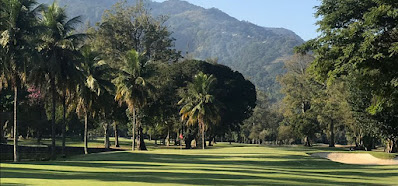(PUERTO VALLARTA, MEXICO) – Pizá Golf, recognized internationally for their innovative approach to golf course architecture which blends traditional British fundamentals with contemporary innovative designs from North America – proudly announces that Itanhangá Golf Club in Rio de Janeiro, Brazil has been nominated by the World Golf Awards™ for the best golf course in Brazil. An association that serves to celebrate and reward excellence in golf tourism, world-class golf courses and golf destinations.
“We are extremely proud to be associated with this nomination. The renovation at the Itanhangá Golf Club came out really well and for the prestigious World Golf Awards to recognize this achievement is remarkable, and to be in the company of some outstanding golf courses like the Rio Olympic Golf Course designed by Gil Hanse is an honour. I am humbled, commented Agustin Pizá, Founder of Pizá Golf.
The Itanhangá Golf Course is one of the oldest golf courses in Brazil. Canadian born Stanley Thomas designed and built the first nine of 27 holes in 1935. The members and its board wanted to update and modernize the golf course as well as challenge its players but also maintain Thomas’ vision. They appointed Agustin Pizá and his team because of his sensitivity to nature, the environment, and ability to find solutions that a golf course this old might present. Their decision was also influenced by the fact that Pizá was chosen among the “25 most sustainable architects” in the world by Green Planet Architects.
The commissioned renovation was to redesign the back nine holes of the Championship Golf Course. Upon Pizá’s initial assessment, he saw that the existing layout created some safety issues to the players. After he reassessed the layout, he found the solution - alter the order of holes 11 through 16. Now, the 11th and 12th are back-to-back par 5s.
“The new circuit combined with the overall modernization actually brought back the original Thompson layout organically,” added Pizá.
There was great respect to the integration and beauty of the environment so there was very little movement of land. The new 11th par-5 hole features an iconic and indigenous Ipệ-rosa tree or pink trumpet tree that was enhanced by a strategically placed bunker.
“There is a unique relationship between the bunker and this tree, native to South America. When the season changes, the landscape changes, as does the golfer’s perspective. A truly beautiful site is when the petals fall and blanket the bunker creating a picturesque scene that enhances the beauty of the tree,” added Piza.
For inclusive purposes, Pizá and his team modified the tee boxes and green complexes which are strategically designed for pin placement options. They can be placed for an easy shot or can be placed for a difficult and demanding shot. New or beginning golfers enjoy the course and the back tees challenge the more experienced golfers. The signature 18th hole remains the most challenging and difficult hole in Brazil but now plays to a fair par-4.
“The beauty of this golf course is enjoyed by everyone, including my musical inspiration – Jorge Ben Jor. I have listened to his music since I was 20. He played Itanhangá on a day I was doing some follow-up and we connected. He told me how much he enjoyed the golf course and its new design. I shared with him that I designed it while listening to your music. Cool and magic moment,” added Pizá.
Pizá Golf’s approach and philosophy to a renovation is unique. He adheres to his “Reassessment Techniques” and they include:
· Gratitude
· Direct communication with nature
· Homage to the beauty surrounding the golf course
· Sustainability – ecological & economical
· What if? Tangibles and Intangibles
· Alternative - multi-purpose
· Inclusive (Real important during and post virus)
· Raise revenues / ROI
For more information on Pizá Golf, visit www.pizagolf.com.


No comments:
Post a Comment